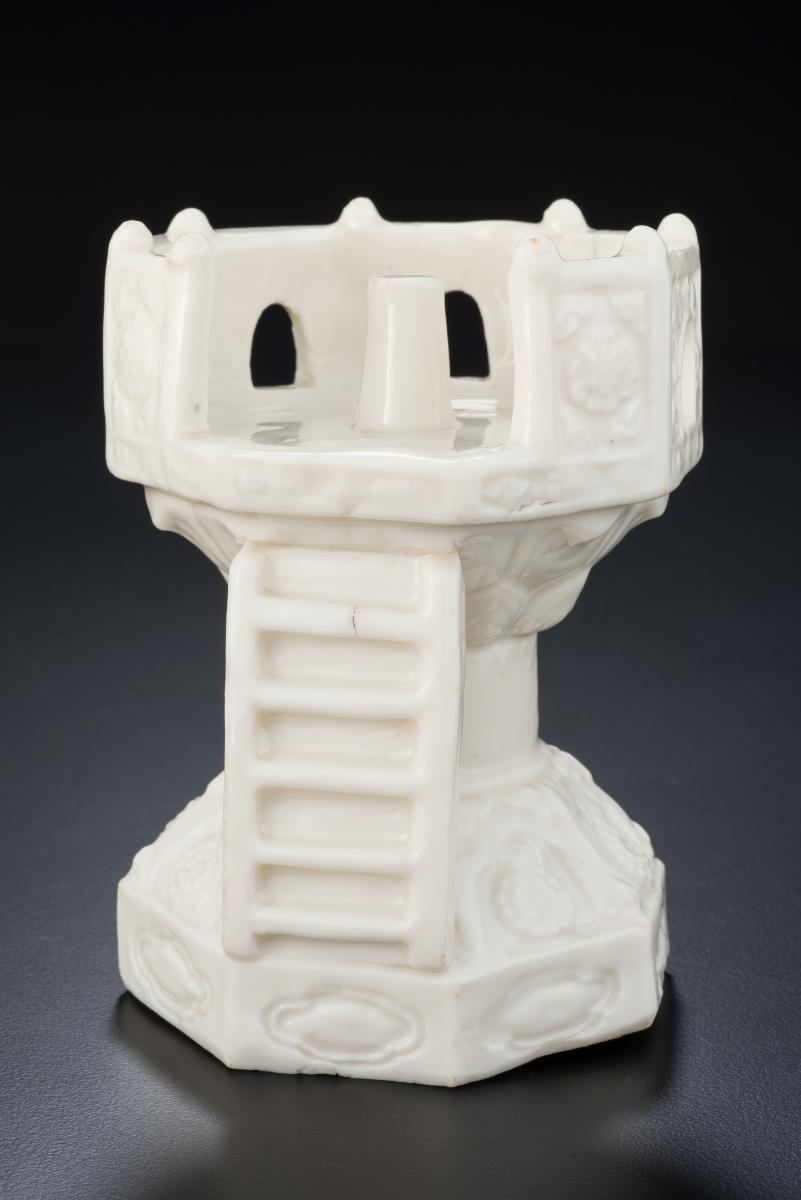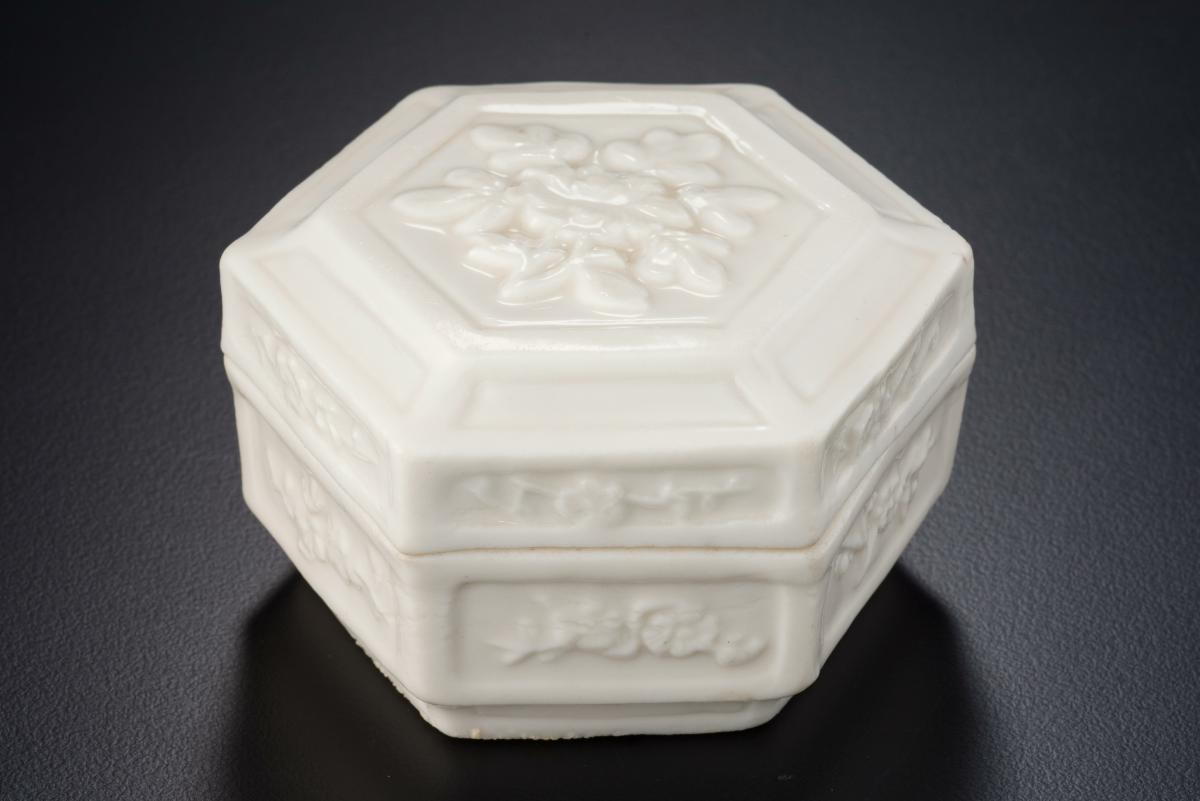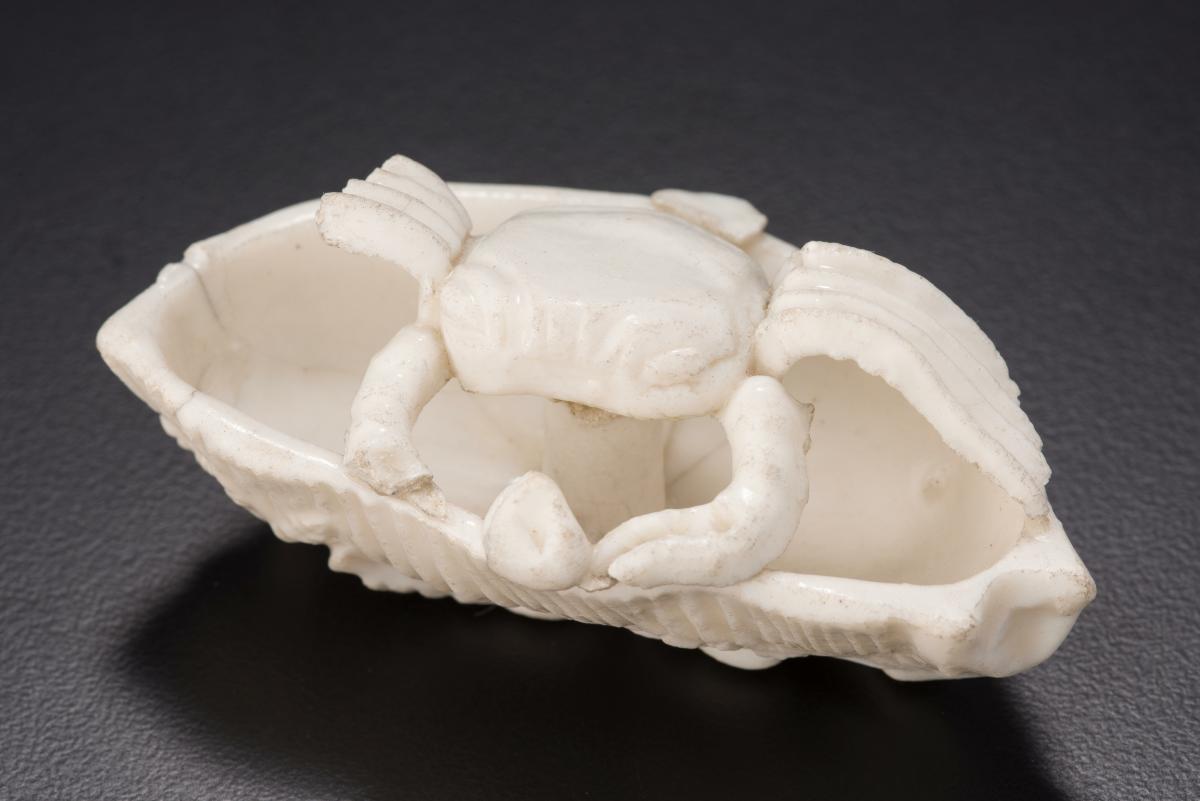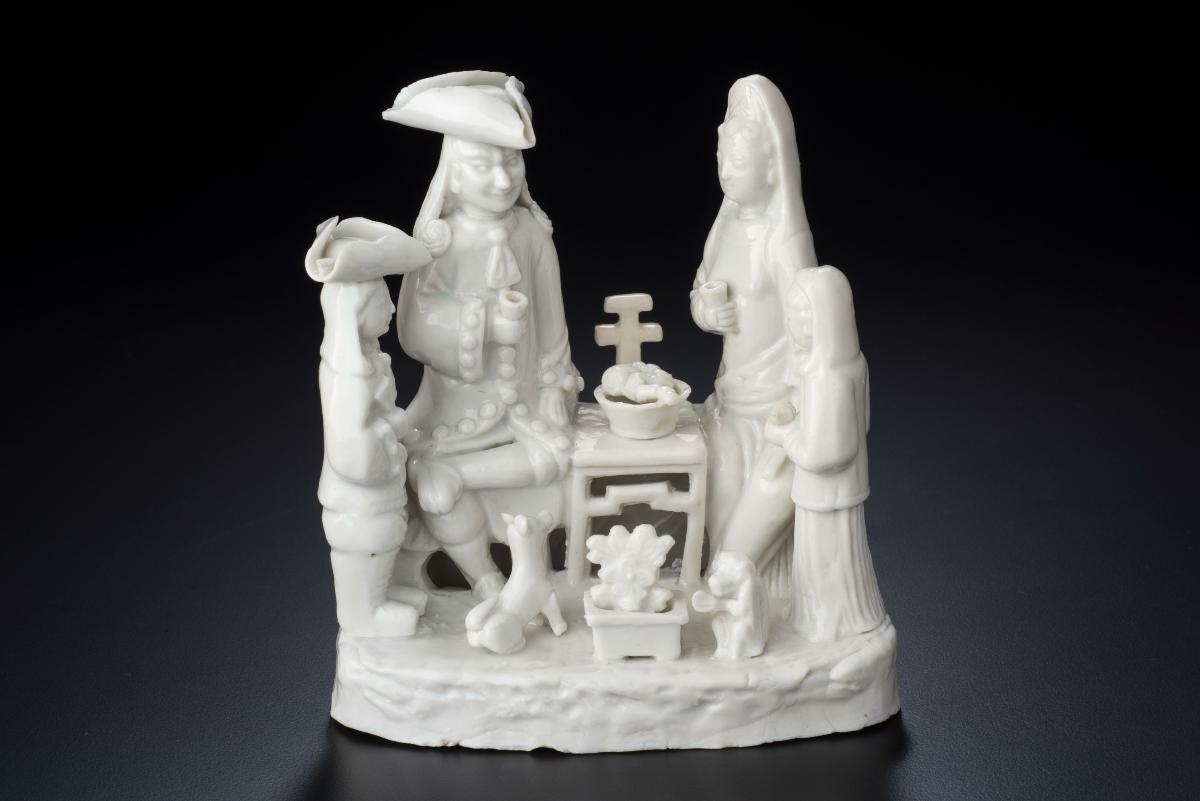Early 18th century European sale records describe pieces such as this as “pulpits” suggesting they were mounts for Christian figures. The octagonal shape moulded decoration are more similar in style with Buddhist shrines in the form of pagodas, which were made in ceramic several centuries earlier. The protruding column indicates that another piece would have been placed at the centre of the platform. The steps are unusual and suggest that this piece was more likely to have been a base for an architectural feature such as a pagoda, rather than a figure.Dehua, located on the southeast coast of Fujian province, is well known for its production of white porcelain, known to Europeans as 'blanc de Chine'. The earliest Dehua porcelain was produced as early as the 14th century but the production and quality of these porcelain peaked around the 17th and 18th centuries.















